Announcement: The FCC’s Next General Manager
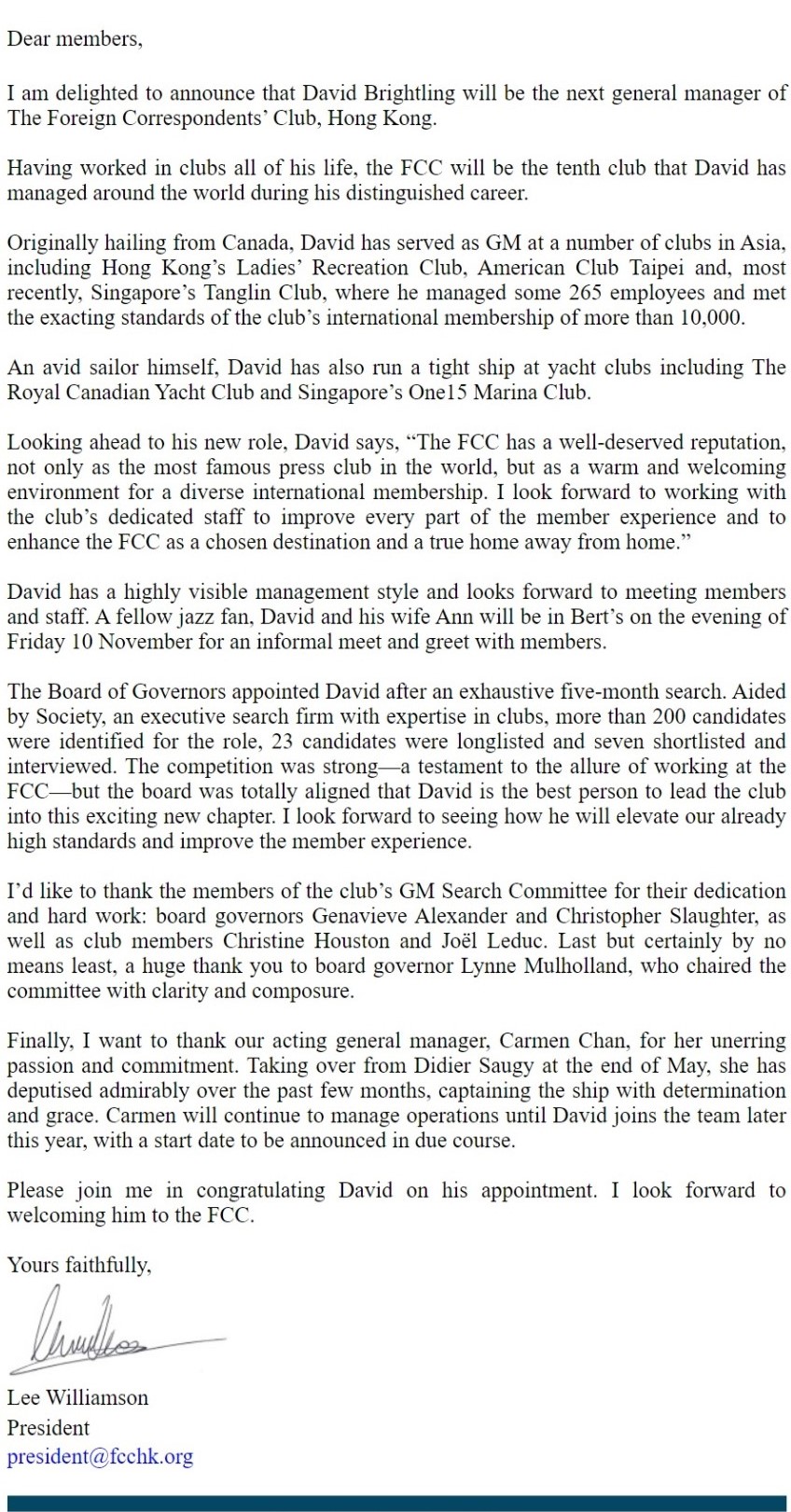
How the HK Philharmonic rose to international success
As the Hong Kong Philharmonic (HK Phil) begins its 2023-2024 season, the FCC had the pleasure of sitting down with Benedikt Fohr, HK Phil’s Chief Executive, to discuss the orchestra’s recent success. From managing practice during the pandemic’s social distancing requirements to winning the 2019 Orchestra of the Year award from UK magazine Gramophone, the HK Phil has overcome many challenges on its journey to becoming one of the top orchestras in Asia.
Moderating the discussion was FCC Correspondent Board Member Karen Koh.
Fohr began with a quick presentation on HK Phil’s history. Starting in 1957, the HK Phil was renamed from its original title, the Sino-British Orchestra. The HK Phil became fully professional in 1974 and since then has toured across the world. Concert halls in Bangkok, Osaka, Seoul, Singapore, and various cities across Australia and Europe have all welcomed HK Phil’s musicians.
In 2012, the HK Phil welcomed Jaap van Zweden as their 8th Music Director, and this current season will be his last. It’s also HK Phil’s 50th season, a milestone in their performing history.
The pandemic had a major impact on the orchestra’s ability to rehearse and perform, yet with the government’s support, they were able to maintain salaries for all of their 96 musicians and support staff.
“Even during the pandemic, the government was very supportive to Hong Kong Phil,” Fohr said.
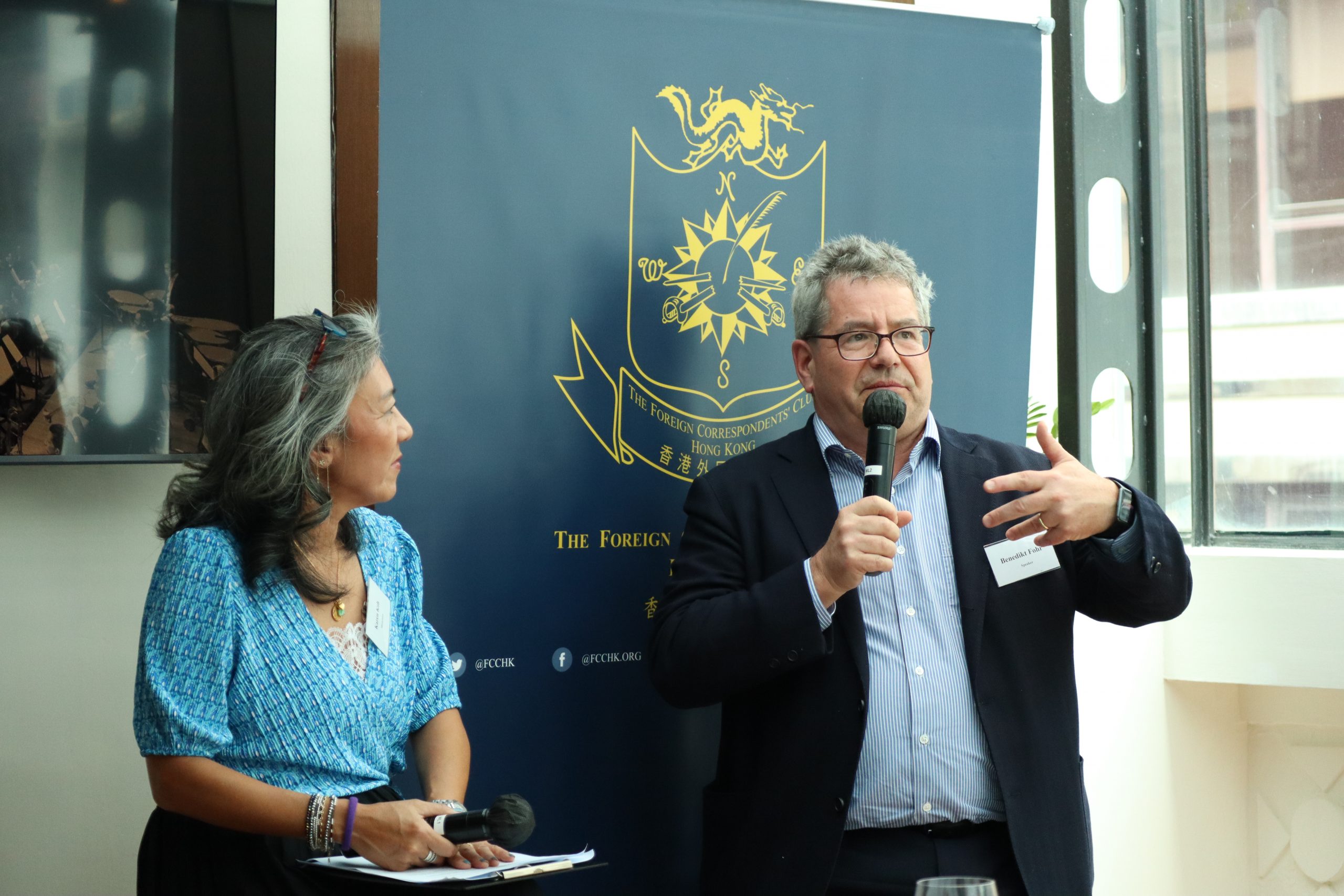
In his presentation, Fohr noted that over 60% of HK Phil’s funding comes from government subsidies, while the remaining amount comes from performance revenue and sponsorships.
HK Phil is widely regarded as one of the top orchestras in Asia, drawing musicians from around the world, and musician turnover is very low. Fohr talked about the recruitment process for musicians, which has evolved after the pandemic.
Fohr also discussed a musical dilemma in Hong Kong. While many local parents put their children in piano, violin, or other types of music classes, at the same time they discourage them from pursuing a professional career in music.
“Parent’s usually don’t want their kids to be professional musicians because they know how hard it is,” he said.
On the plus side, audiences in Hong Kong tend to be younger than those in Europe, which Fohr says is a good thing for the longevity of HK Phil and Hong Kong youth’s interest in classical music.
“The good thing here [Hong Kong], compared to Europe, is that there is a lot of motivation from the parents to bring their kids into music for whatever reason,” Fohr said, which then leads to consistent ticket sales for performances whereas in other countries, only older generations might be in attendance.
“That’s very hopeful,” Fohr added.
Fohr also had some advice for parents who are thinking about introducing their children to music: stick with mastering one instrument, even when it gets difficult.
“As a part of education, I think the most important thing is that we teach our kids to do something and stick with it, and not to change from one subject to another when it’s getting difficult,” he said.
Watch the full talk on our YouTube channel below:
FCC: Your Club Needs YOU! (To Join the New Charity Committee)
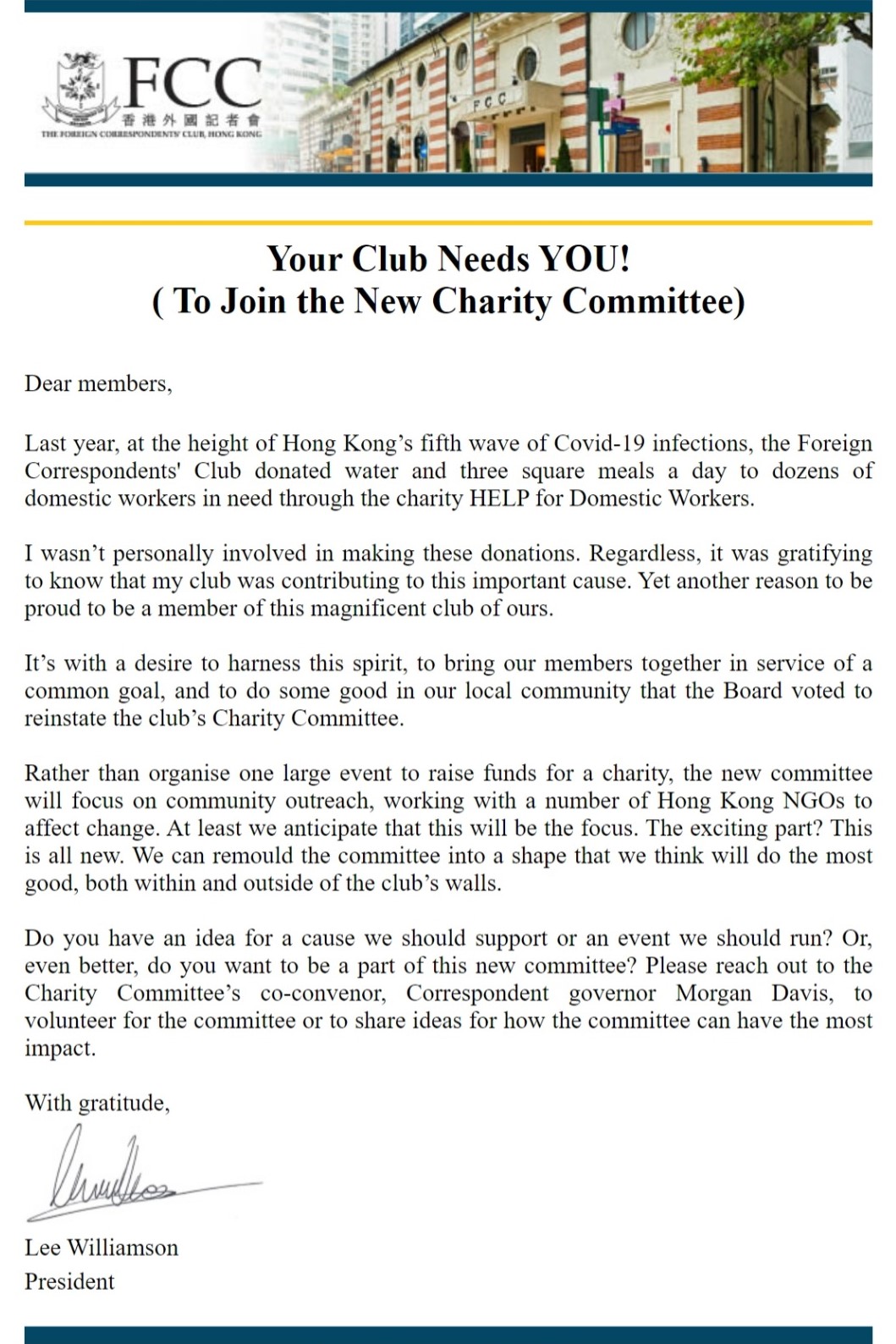
Formula One doesn’t need an 11th team, says motorsport expert Matthew Marsh at the FCC
Mid-September’s Singapore Grand Prix resulted in Max Verstappen of the dominating Red Bull Team being dethroned by Ferrari’s Carlos Sainz Jr. Then just a week later, Verstappen redeemed himself by coming in first at the Suzuka Grand Prix.
These neck-and-neck outcomes have revived fan and expert optimism that Formula One can still be just as exciting and unpredictable as other mainstream sports.
Matthew Marsh is one of those experts. He covered F1 in Asia for ESPN and FOX Sports for over 20 years and was the first driver to represent Hong Kong in the Le Mans 24-Hours. Now he focuses on commercial partnerships in F1, as well as cross-series events in Formula E, Indycar, and NASCAR.
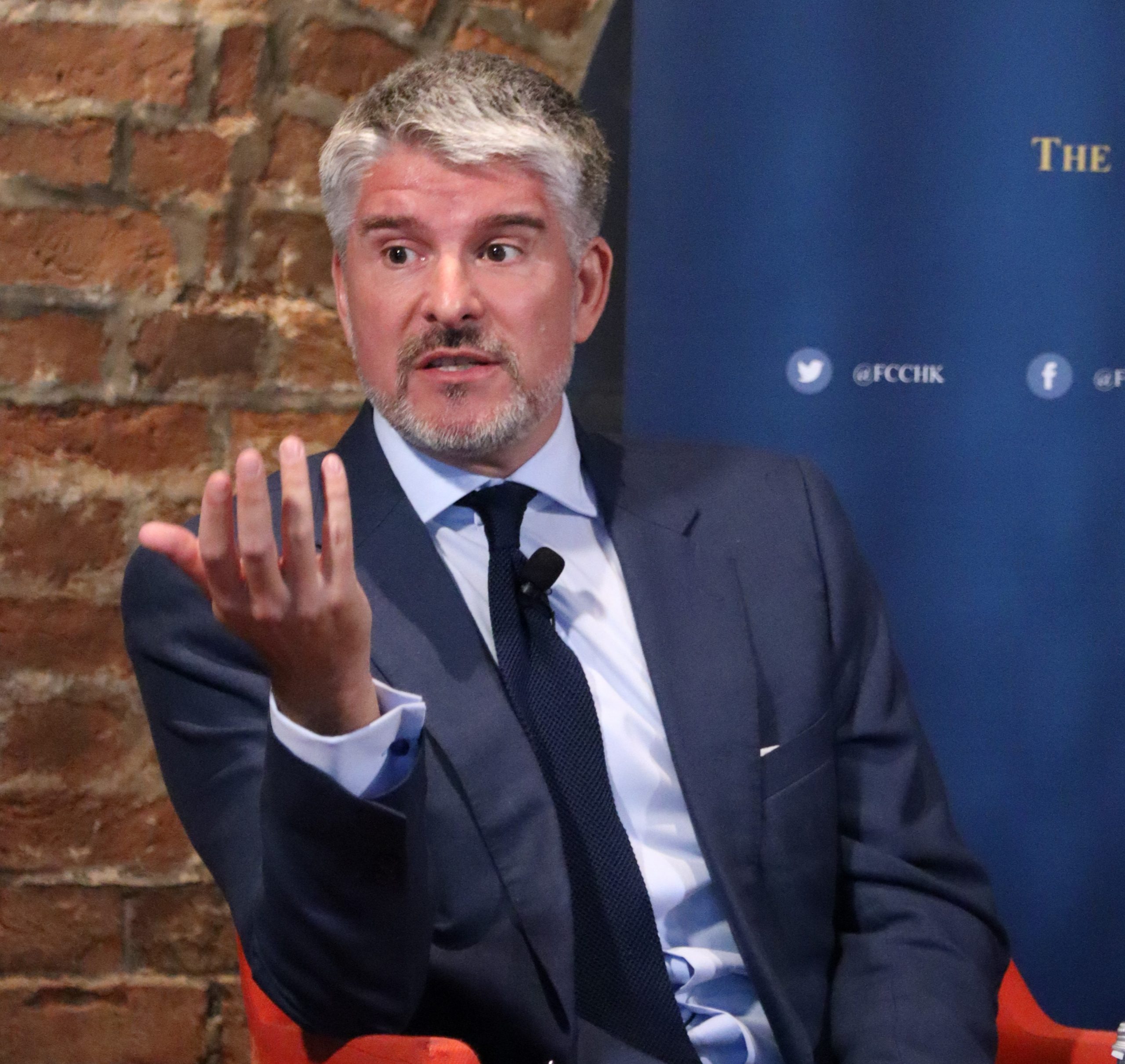
To share his insider thoughts about the recent races, as well as other key aspects about F1, Marsh sat down at the FCC’s September 26 Club Lunch with Second Vice President Tim Huxley. The duo began their discussion with Red Bull’s dominance and how they have been able to stay on top throughout the years.
“If you rewind the clock, in those years of Mercedes dominance, Red Bull still won two or three races a year with a sub-optimal power unit,” Marsh said. “Now they’ve got an equal — at least equal — power unit. They’re dominating again as they were in the Sebastian Vettel years.”
Huxley then asked Marsh about who he finds to be the current “winners” and “losers” in F1 racing. For winners, Marsh listed Verstappen, Charles Leclerc, Lando Norris, and Oscar Piastri, who have all placed in the top ten at the last two races.
For losers, one name came to Marsh’s mind: Sergio Perez, who DNF’d at the most recent Suzuka Grand Prix. He cited mistakes that Perez has made, mistakes that other drivers wouldn’t make — or would intentionally make at critical moments while driving.
For the rookie drivers, Marsh thinks there’s a fundamental issue.
“I still think we have a problem that Formula One testing is so restricted,” Marsh said. “There are so few days now — for cost-cutting reasons, I understand that — but that does mean that young drivers never really get a chance to hone their skills. These cars are super complicated.”
Huxley and Marsh also debated the idea of introducing more F1 teams to the sport, an idea that Marsh finds completely unnecessary.
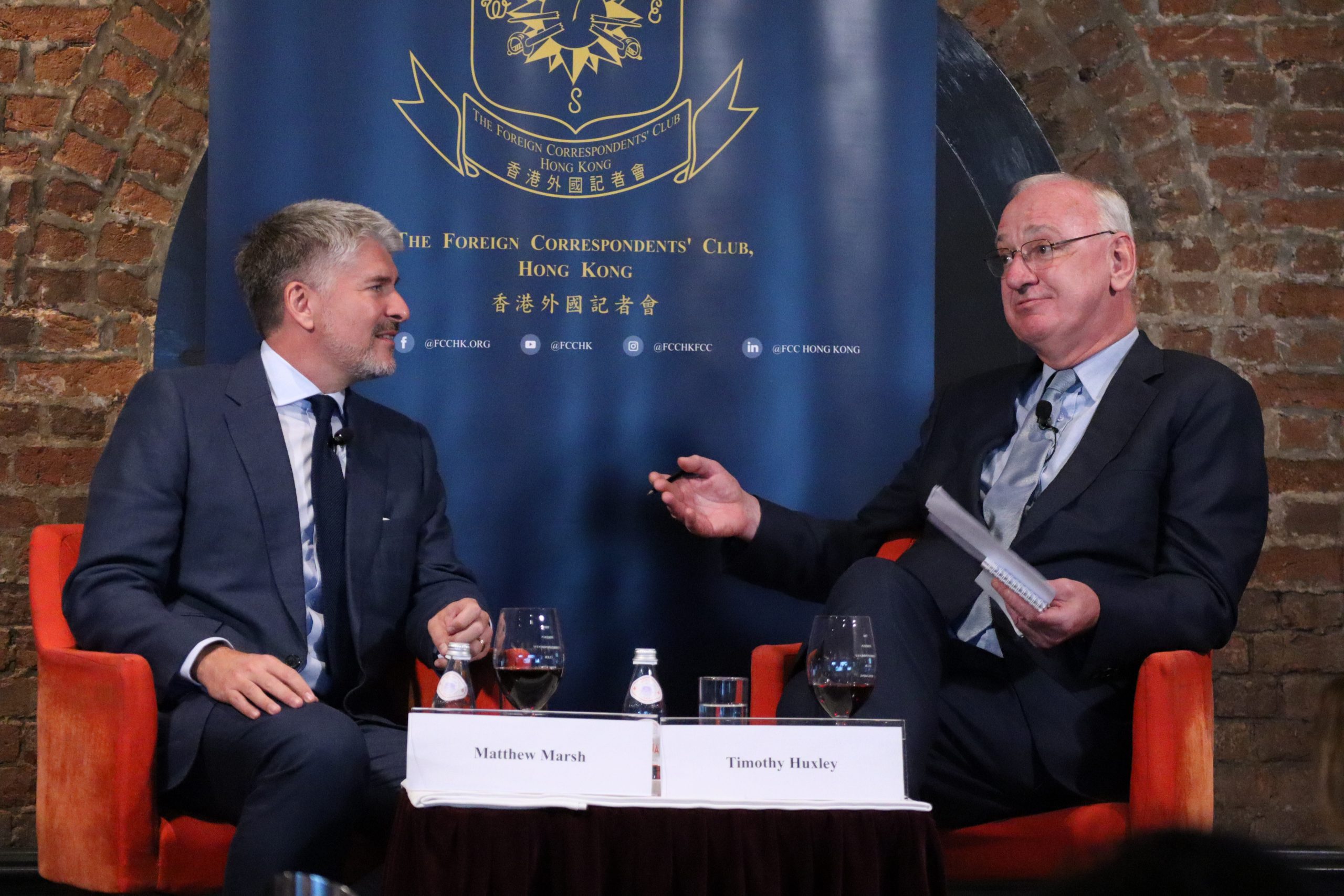
“We’ve got 10 teams, how many do we need? This is the Champions League of motorsport. There are no crap teams in Formula One. There are no crap drivers. There used to be both crap teams — they would die — and there used to be crap drivers. They’re no more,” he said.
Marsh went on to explain how additional teams would dampen F1’s efforts to become more sustainable and environmentally friendly, efforts that aren’t well-known across newcomer and seasoned fans.
“If we went to a Grand Prix, I bet that less than 10-percent of the people in the grandstand, depending on the Grand Prix, would actually know the cars are hybrid,” he said.
He clarified that although this is a sport using motor vehicles, only one percent of F1’s carbon footprint is coming from the racecars going around the track. The remaining 99-percent of the carbon footprint comes from the logistics and travel arrangements, factors that all sports must take into consideration.
“An 11th team adds 10-percent to the carbon footprint… So why would F1 want to do that? I don’t see any upside,” Marsh said.
When it comes to F1 in Asia, Huxley posed an important question: Is Asia being neglected in F1’s efforts to expand their business? He listed a series of Asian countries which have fallen off the F1 calendar — India, Malaysia, South Korea, and Vietnam.
In his reply, Marsh pointed out Singapore as a model F1 location that other countries can learn from, especially in regards to hospitality and improving fan and athletes’ overall experience.
“It is a two-way street. The reason that Singapore has been successful is that Singapore saw the value of being on the F1 calendar,” he said.
Marsh compared F1 in Singapore to races in Shanghai, a location he still likes but also finds himself questioning due to the city’s seemingly lack of amenities and thoughtfulness in putting on a Grand Prix, all of which Singapore takes into great consideration for their events.
Another important note about Singapore’s involvement with F1 is their official sponsorship with the sport, which he recommends all host cities enact in order to reap the full range of benefits and overall race experience.
“If you’re going to spend 30 million dollars a year on hosting a Grand Prix, then why don’t you spend another two or three on top to activate it properly?” he said.
Watch the full talk on our YouTube channel below:
Control over AI is one of the most important battles for China, EU, and US, according to digital regulation expert Anu Bradford
With AI’s exponential growth and its increasing uses in nearly all sectors, governments across the world are racing to keep this advancing technology under their control. Three key players have emerged in the global battle in keeping tech companies in check — China, the European Union, and the United States — each with their own unique approach and philosophy towards governance.
But alongside their internal power struggles, these three players are also competing against each other in exporting their style of regulation to the rest of the world, and there’s no clear leader in sight.
To break down the dynamics of AI regulation, the FCC hosted a Club Lunch discussion on September 20 with Professor Anu Bradford from Columbia Law School. Bradford is an expert in international trade law and digital regulation, as well as the author of Digital Empires: The Global Battle to Regulate Technology, which was published in September 2023.
“There’s a recognition that AI is one of the most important ‘theaters of war,’” Bradford said. “That’s where the most important battles are being fought, and that’s where you cannot afford to be left behind.”
Alongside FCC Professional Committee member Antony Dapiran who served as the moderator of the talk, Bradford explained the differences between AI regulation’s “horizontal” battles (between different governments) and “vertical” battles (between governments and their respective tech companies). While the vertical battles result in either self-regulation by tech companies or government overreach, horizontal battles highlight the different approaches by the three main regulation players and how they attempt to export their style of regulation.
China takes on a state-driven approach similar to how the rest of the country is governed. The US is market-driven, meaning that free speech and internet, along with innovation, are core values that guide legislation. On the other hand, the EU is rights-driven — the democratic rights of internet users are the top priority for European lawmakers.
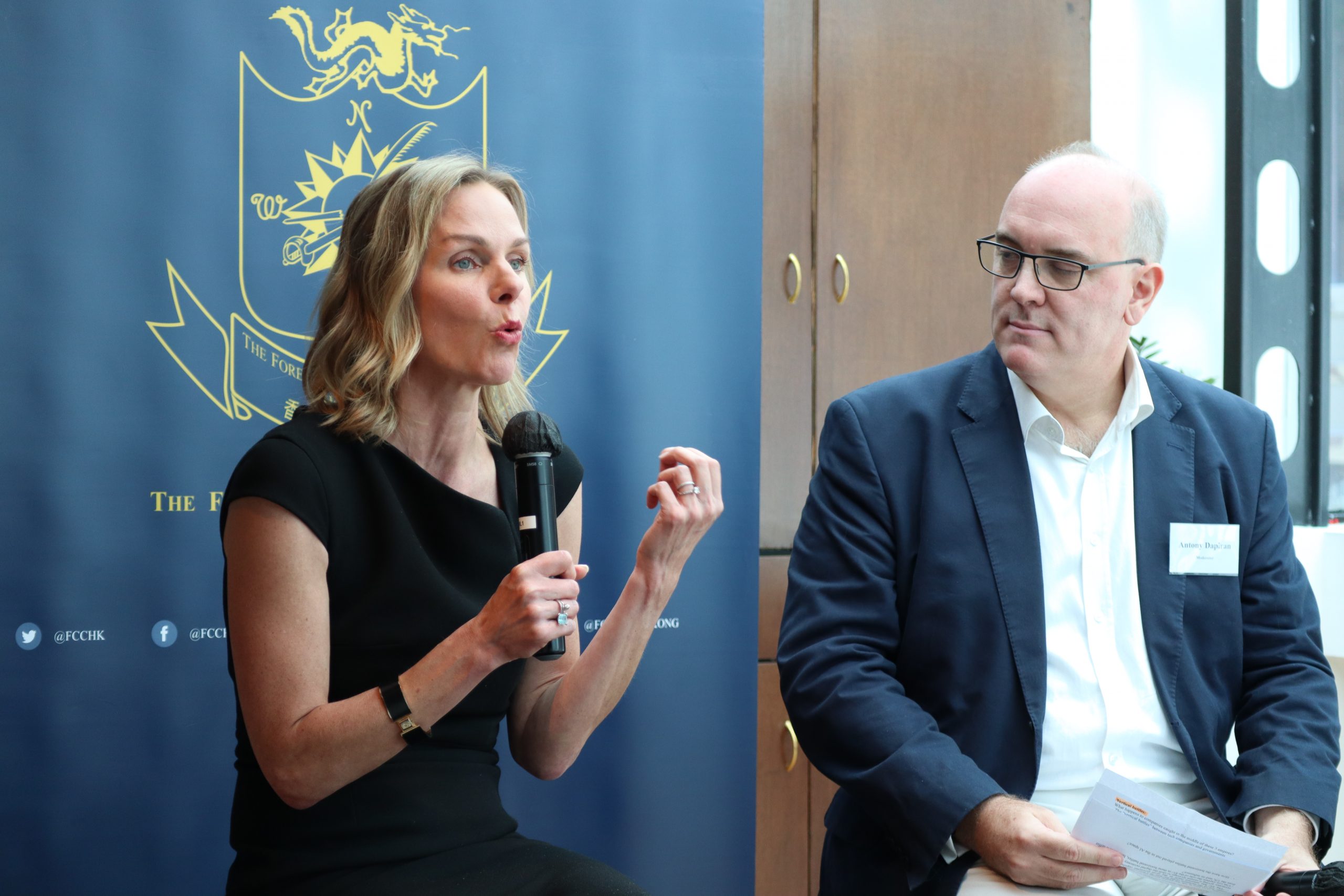
Both the US and EU are considered “liberal democracies” in the tech world while China is more authoritative, yet it is China that poses a significant challenge in the US and EU’s efforts to extend their methods of regulation to the rest of the world.
“It’s the Chinese model that holds greater appeal,” said Bradford, citing higher surveillance as one of the reasons why countries with higher crime rates than the US and EU might adopt China’s way of using AI.
Another reason why other countries might idealize China’s model is due to a critical look at how technological innovation still exists despite the heavy regulation that the US and EU constantly warn against.
“There’s been this notion that the American model is partially superior because people are free, and when you are free, freedom is necessary for innovation,” she said. “China has challenged that notion. China has shown that even though it is not free, it has been able to innovate.”
Additionally, Bradford cited the US’ failed attempts at enforcing its own tech companies to self-regulate, resulting in growing concerns over the privacy and data safety of American internet users.
“The American digital empire is declining,” she said. “There’s very little faith anymore in the tech companies’ self-regulation. Even the US is slowly abandoning its hardcore commitment to free markets and sort of recognizing it hasn’t provided a society that is necessarily free or where democracy is more robust.”
However, China does have one limitation: generative AI. This is where Bradford explains that the US has a significant advantage over China given the Chinese government’s level of censorship, which results in the data pool for Language Learning Models to train being drastically reduced.
“That might be the moment for the US to say, ‘look, ultimately there are limits to your [China’s] innovations in certain domains of technology where you are restricting information,’” she said.
A couple of outliers that Bradford mentioned in her talk are India and Japan, who both pick and choose the elements from the three styles of regulation and aren’t necessarily emerging as their own separate digital empires.
Mixed styles of regulation like these also leave room for increased influence from either the authoritative models or tech companies that pose major risks to the US and EU models.
“That leaves the the US and the EU with a very big challenge that if they cannot show to themselves and to the world that there is a liberal democratic way to govern tech companies, the true digital empires are either the authoritarians or the tech companies, and that is a very disconcerting outcome for anybody who believes in liberal democracy as a foundation for human engagement and for our digital society,” Bradford concluded.
Digital Empires: The Global Battle to Regulate Technology is now available on Amazon.
Watch the full talk on our YouTube channel below:
An extended talk about the FCC’s King of Kowloon Wall Exhibition and Hong Kong’s art scene with local curators
September’s FCC Wall Exhibition features the work of Tsang Tsou Choi, the legendary King of Kowloon who was an iconic figure in Hong Kong’s art world and unexpectedly passed away in 2007. His use of traditional (and not-so-traditional) Chinese characters became a common sight around the city, telling stories across walls, light posts, mailboxes, sidewalks, and other parts of public spaces.
Before his death, Willie Chung took it upon himself to learn more about the King of Kowloon and preserve his works as a part of his life’s mission, becoming the King’s caretaker for many years — right up until the last week before he passed away.
After the King passed away in 2007, Hong Kong’s art world pleaded with the local government to not wash away or paint over his works, insisting that his graffiti was a cultural icon. Over time, Chung accumulated the largest King of Kowloon collection in the world and has become committed to telling the King’s story.
Sitting down with FCC Journalist Board Member Joe Pan at a Club Lunch on September 11th, Chung talked about his journey as an artist trying to make sense of the King’s seemingly odd behaviour and artistic style.
“Many of us, including myself, didn’t fully appreciate or understand his actions and his artworks in the past,” Chung said. “I am quite sure, even up to this moment right now, a lot of people still don’t understand what he was writing.”
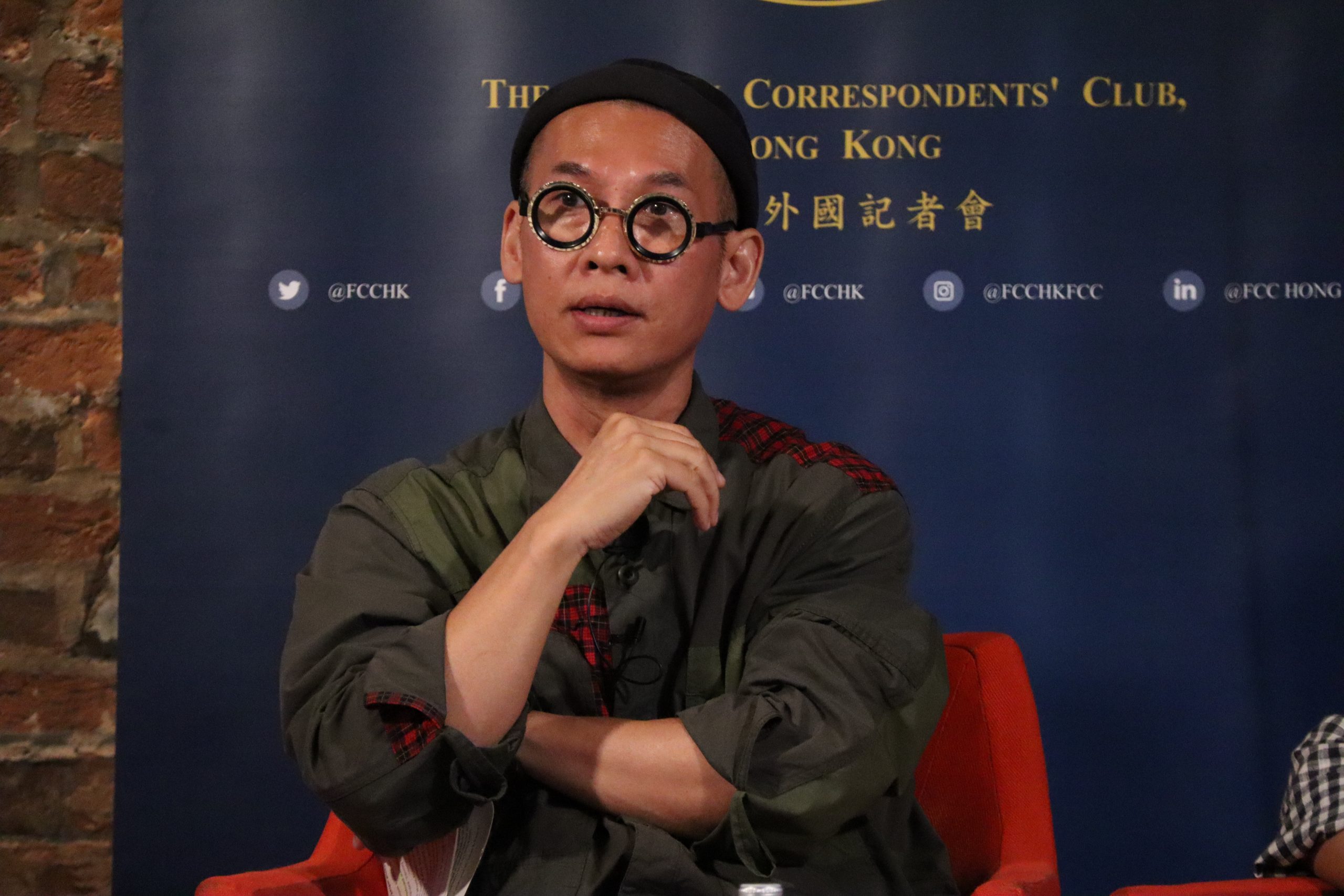
Through his relationship with the King of Kowloon, Chung was able to author five books about the legendary artist and has also created workshops and exhibitions dedicated to educating others, especially the younger generation.
“They asked me why I think I need to create a lot of workshops, why it’s so important. Because, I would like to tell the whole story of what I know about Uncle Choi to the new generation,” he said.
In order to broaden the scope of the talk, Chung’s colleague Hilary Wong also joined the panel to share her views on Hong Kong’s art scene and the evolving role of curators. To her, curators have an important role in promoting the work of growing artists and after the year 2000, they have shifted their focus from fine art to contemporary art.
In line with local curators’ modern preference for contemporary art, Wong also explained how the city can increase its prominence as a global art hub. She believes that highlighting local artists is key.
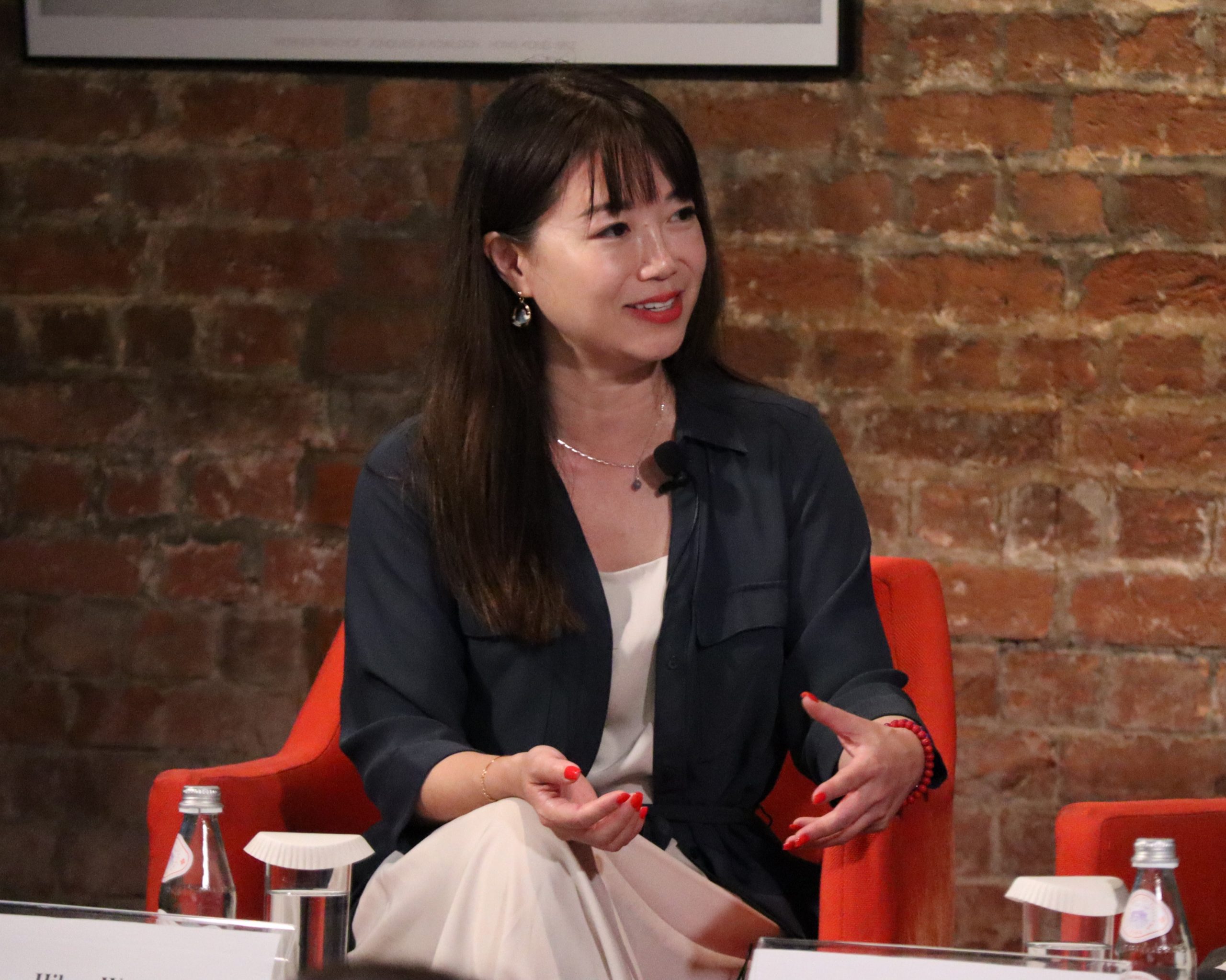
“We have more focus on local artists. Every place in the world, when the art fairs come in, local artists will be recognized,” Wong said.
She also highlighted future projects that include experimental learning, the artistic work of students in STEAM (Science, Technology, Engineering, Art, and Math), digital art, and even the works of Leonardo Da Vinci. She also mentioned new programs for children that break away from the traditional classroom setting for a more involved learning experience.
“This center will be a new approach for learning, entertainment learning,” she said. “So we hope to teach the students through playing, not very traditional learning centers. It’s a museum-like setting.”
Circling back to the King of Kowloon, moderator Joe Pan was curious about where exactly one could find the famed graffiti in Hong Kong. Both Chung and Wong said a list would be coming out soon, but not just yet.
“We can tell you that there are more than thirty works out in the public, but they’re hiding!” Wong said.
Watch the full talk on our YouTube channel below:



